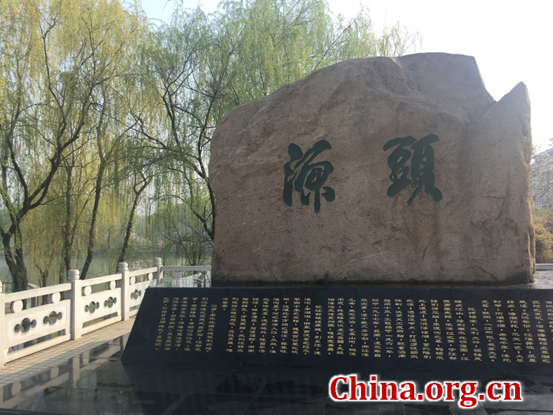Diversion project's eastern route transfers 2.5B cubic meters of water
The eastern route of the South-to-North Water Diversion Project has transferred more than 2.5 billion cubic meters of water to Shandong province since the first phase of this project began operation on Nov. 15, 2013, officials from the administrative bureau of the project's eastern route said.

Over the past four years, the eastern route has transferred 170 million, 328 million, 602 million and 889 million cubic meters of water, respectively, to Shandong province, officials said. In 2018, the transfer volume is expected to reach 1.08 billion cubic meters.
The project has provided a stable supply of water from the south to the dry north and helped to increase the water quality as well. According to the officials, the quality of the diverted water has remained at the level of Class III of environmental quality standards for surface water.
Designed to divert water from China's longest river, the Yangtze River, the eastern route of the water diversion project started in Yangzhou city, Jiangsu province. The first stage of the project aims to supply water to dry areas in Jiangsu, Shandong, and Anhui provinces.
The first phase of the eastern route is 1,467 kilometers in total, with 404 kilometers in Jiangsu province. There are 13 pumping stations built along the Beijing-Hangzhou Grand Canal and other parallel rivers to pump water from the Yangtze, contributing to irrigation, shipping and water supplies to cities along the route.
The Jinhu and Hongze pumping stations are the two major stations built along the eastern route, which also help to set examples for new technologies and environmentally friendly designs for the project's future development.
In 2017, the Jinhu station transferred 229 million cubic meters of water through self-developed and energy-efficient technology.
"The new technology was awarded the first prize of China's top technology awards on water conservancy and widely applied in other pumping stations along the route," said Guo Jun, the station manager.
The Hongze station, while diverting water and generating electricity for nearby villages, has been responsible for tackling pollution threats along the eastern route. The station has taken a slew of measures to treat improperly disposed household waste and sewage waste discharged into rivers. After constructing structures for pollution prevention and control, the Hongze station was officially recognized as a national scenic spot in 2015.
The South-to-North Water Diversion Project was conceived by late Chinese leader Mao Zedong in 1952. The construction on the eastern route began on Dec. 27, 2002.